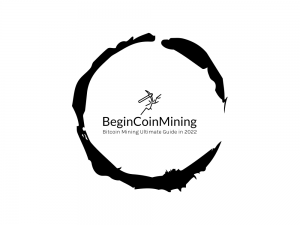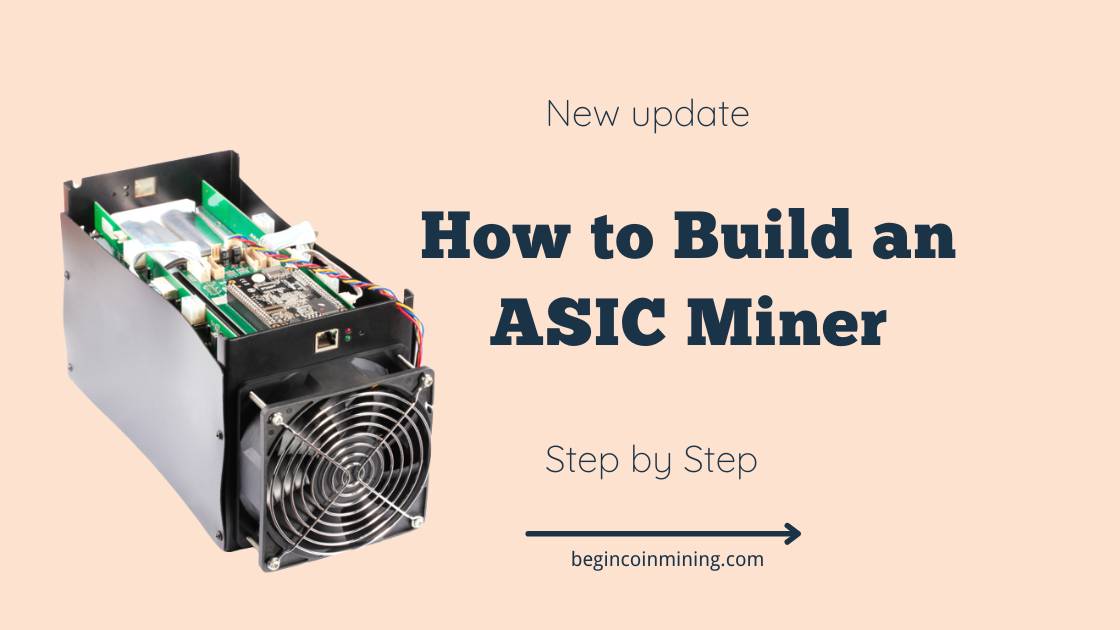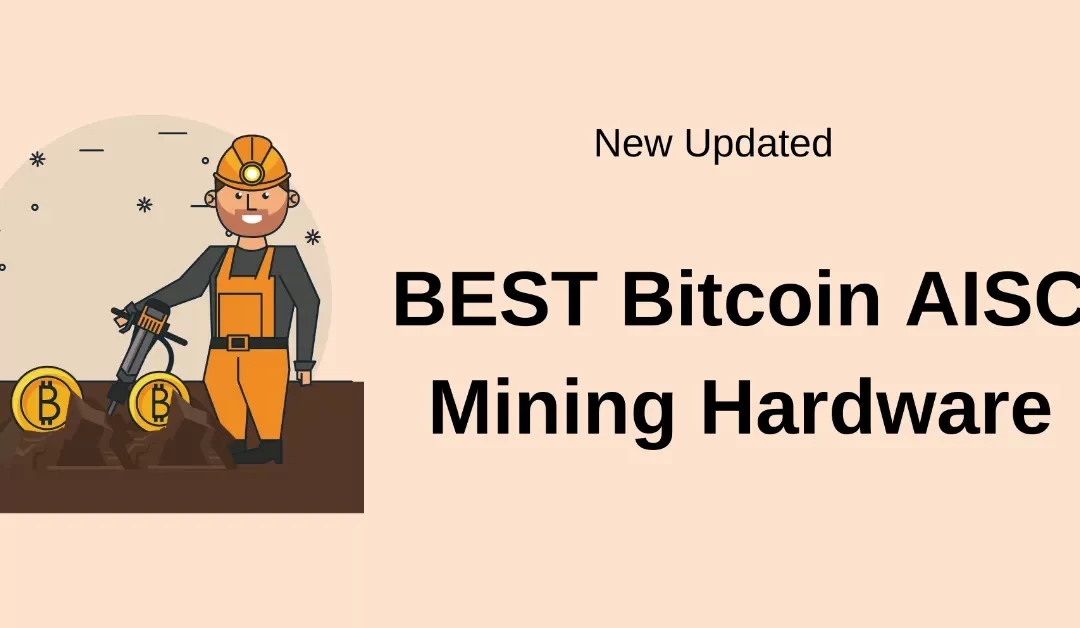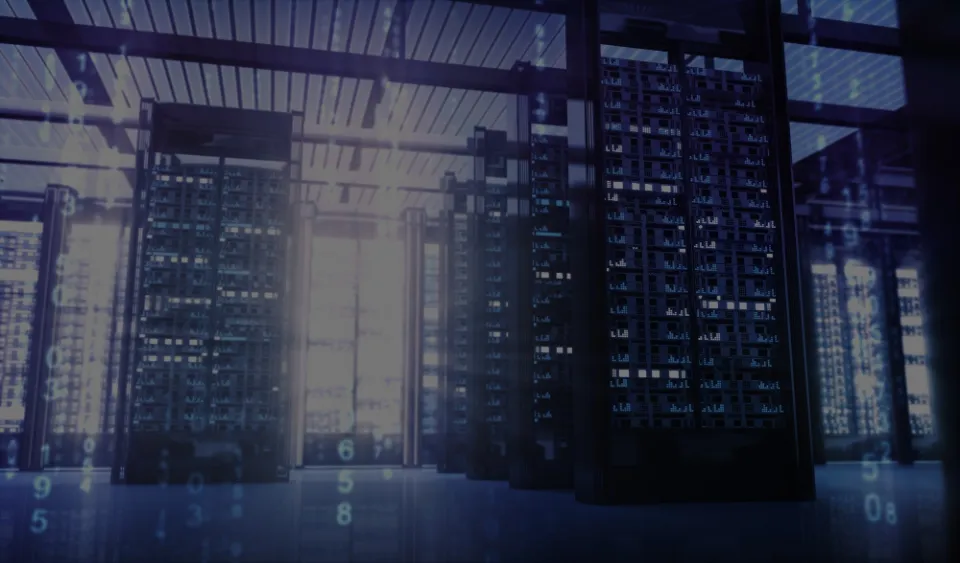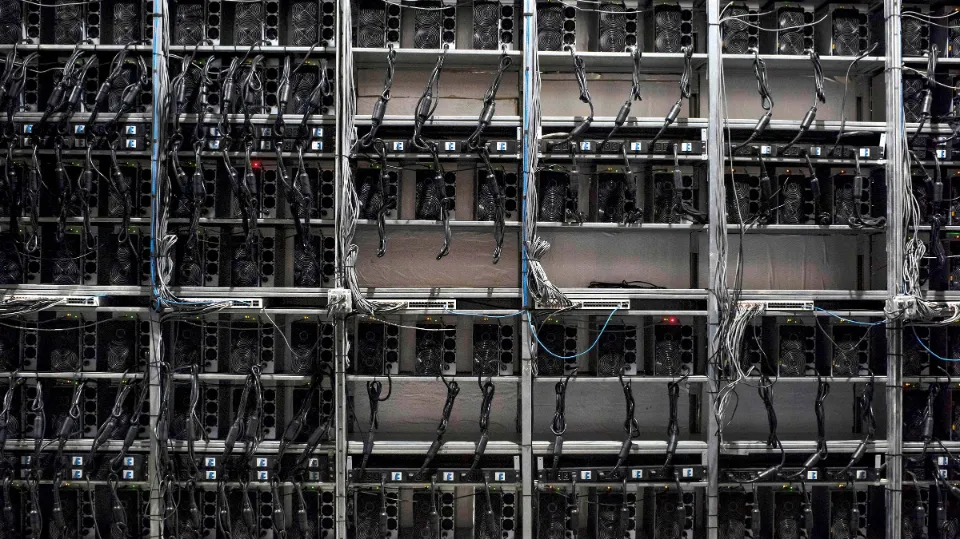Discover what should be considered before building your own ASIC miner, the key components required, and a step-by-step guide for the assembly of an ASIC mining rig.
Here are the basic steps to build an ASIC miner using DIY pre-built components to mine a cryptocurrency:
- Evaluate the costs and viability of constructing an ASIC miner. Calculate the profitability while taking into account all associated costs, such as those for mining hardware, electricity, and software.
- Find and buy the necessary components. Purchase the basic parts, including the rig frame, RAM, printed circuit boards, PSU, hashboards, heatsinks, cooling fans, and RAM.
- Build the ASIC miner. Attach the fans, assemble the rig frame, place the PCB and hasboards, and connect the PSU.
- Software for mining should be chosen and installed. Install the mining program you’ve chosen for the particular cryptocurrency.
- Organize a wallet and sign up for a mining pool. Create a cryptocurrency wallet, then look for a secure mining pool to join.
- Start mining crypto. Connect to the blockchain network, turn on the ASIC mining rig, and begin mining cryptocurrency.
- Monitor the condition of your ASIC miners. Monitor the condition of your ASIC miners, track the temperature, clean the devices from dust, and ensure heat dissipation.
You may be aware that, when compared to the more conventional mining methods using CPUs and GPUs, ASIC mining is thought to be the most effective and profitable. However, ASIC miners can be quite expensive, making them unaffordable for many miners to begin with.
How can you create your own ASIC miner while also lowering startup costs for your mining company? Or should you stick with the traditional approach of mining with CPUs and GPUs, which might not be more profitable but is certainly simpler to carry out? Let’s explore every scenario to determine which one would be most advantageous for you and how to build an ASIC Miner
What is Crypto Mining?
Before getting into the specifics and determining whether you can build your own ASIC miner and which option would be best for you, it is crucial to comprehend what mining is and why it is necessary.
In order to make sure that there are no fraudulent or scam activities on the blockchain network, new crypto transactions must first be validated through mining. In order to solve challenging puzzles that serve as an indirect validation of the entire transaction, a miner contributes its hardware power whenever a cryptographic transaction occurs. Each miner receives compensation for their efforts in the form of a network fee, which you may be familiar with. You can earn more money the more transactions you validate. But to do that, you’ll need powerful processing equipment that can quickly crack codes and equations, speeding up and streamlining the validation process.
The only reason mining is absolutely necessary for the cryptocurrency industry is that without it, no crypto transaction can be processed. To process the crypto transaction and complete the order, there needs to be a miner or mining pool available to validate the transaction. When it comes to mining pools, they are merely a collection of miners that expedites the validation process rather than taxing a single miner who will also take more time.
Bitcoin (BTC) Mining Ultimate Guide
How Can You Mine BTC and Other Cryptocurrencies?
Here are the methods for mining Bitcoin and other cryptocurrencies with a brief discussion of the ASIC mining process.
CPU Mining
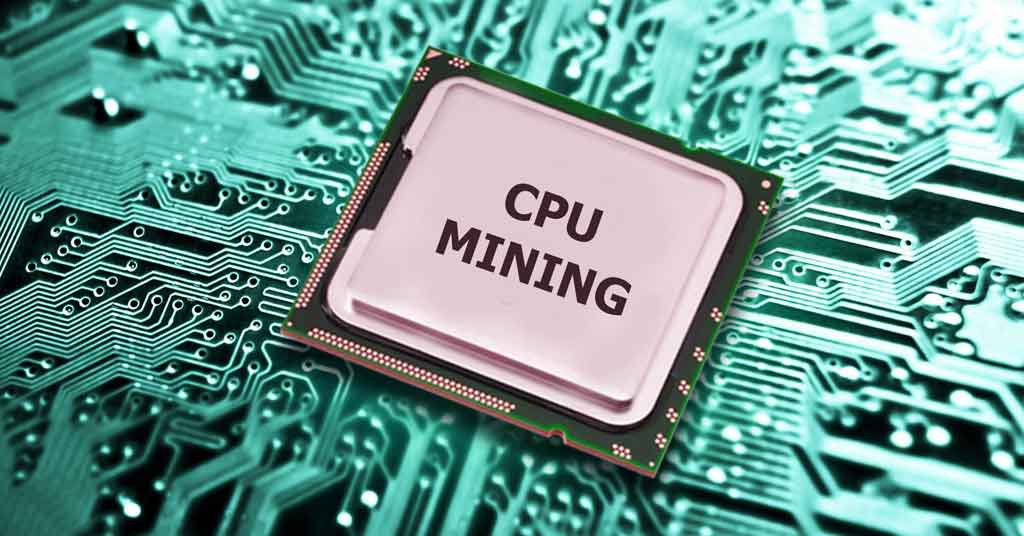
The term “CPU” stands for central processing unit, and when used in this context, we’re referring to the processors or CPUs of desktop or, in rare instances, laptop computers. Do not forget that due to the hardware’s limited efficiency, CPU mining is thought to be the least profitable method of mining. Professional miners and crypto enthusiasts do not favor CPUs because they can only compete with other mining systems. However, if you are a novice and are just beginning your mining career, CPUs can introduce you to almost everything and give you a path where you can develop, comprehend, and earn more.
GPU Mining
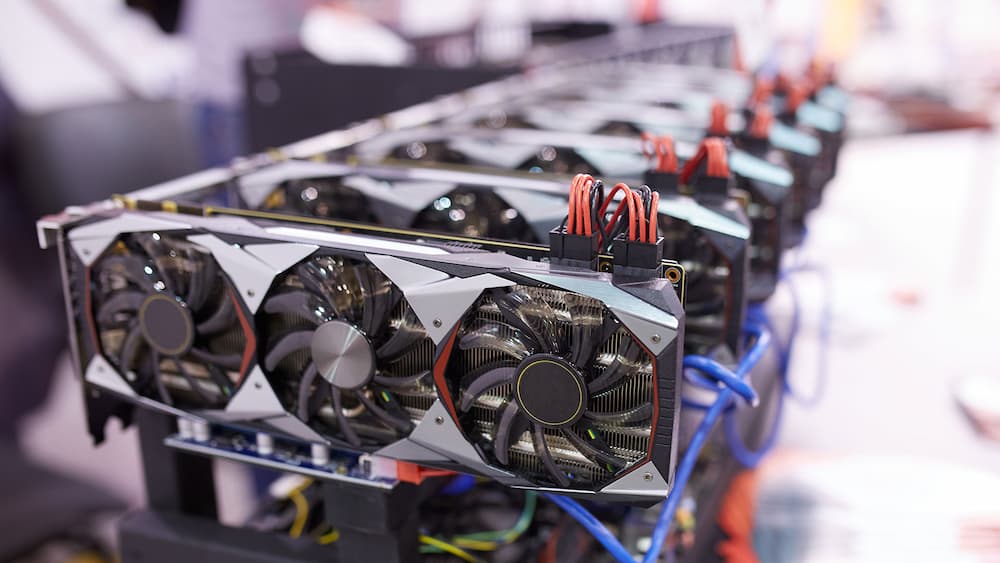
Because GPUs (Graphics Processing Units) are widely available, relatively less expensive than mining-specific hardware, and relatively simple to operate with just a basic computer, GPU mining is probably the most well-known form of mining worldwide. Not only that, but there are a ton of programs out there that enable one-click mining, so you can start mining without knowing any programming or coding.
To begin mining, all you need to do is click a button; to stop mining, click another button. While GPU mining provides higher returns than CPU mining, it still falls short of what an ASIC miner would deliver. You can explore this option and see how things work out for you, though, given the value of GPUs compared to ASIC miners.
Finally, many traders pair up multiple GPUs to combine their power and increase the hash rate in order to earn even more and improve the efficiency of their GPU mining. For that, you might need to set up a separate stand on which you could set the GPUs, and then start running all of them simultaneously to start producing a higher hash rate. The installation of the mining rig is only advised if there is a stable electricity supply and a colder environment.
Read More: ASIC Miner vs GPU Miner
ASIC Mining
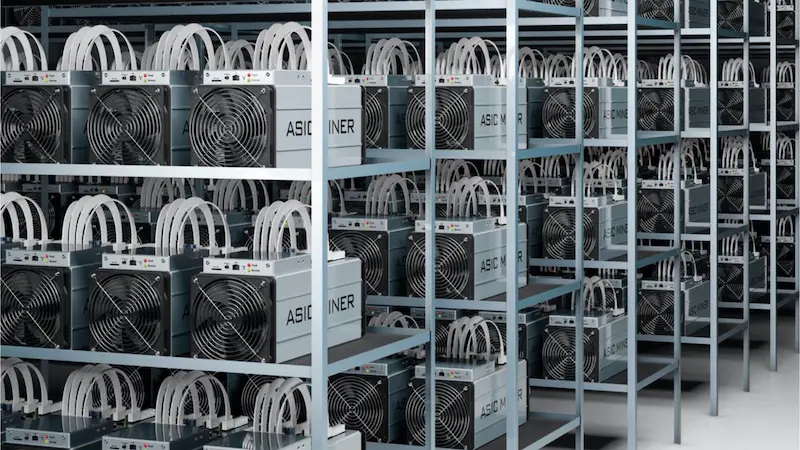
ASIC (application-specific integrated circuit) machines are your final option when it comes to mining. Comparatively speaking, ASIC machines are undeniably the most profitable and effective. The only problem is that ASIC machines are made specifically for one type of crypto asset rather than supporting the mining of multiple cryptocurrencies. You must consider this aspect and choose the cryptocurrency you want to mine when buying or building your own ASIC machine.
As they are application-specific and energy-efficient, ASIC mining equipment is also quite expensive. These machines can be quite loud and heavy, so it’s important to maintain them properly if you want them to last for a while.
Can You Build Your Own ASIC Miner?
Yes, it is possible to build an ASIC miner but it is very challenging to build one from scratch as it comes with a host of challenges that are not for beginners. An ASIC miner’s individual parts must first be located, which is difficult. It will be challenging (but not impossible) to source products because ASIC manufacturers hardly ever keep individual components in stock.
These parts will also need to be assembled properly. The person will then need to learn how to add mining software and be comfortable with programming code in addition to assembly in order for the ASIC miner to be able to communicate with the chosen blockchain. A DIY GPU mining rig is an alternative if the difficulty of building an ASIC miner is too great. GPUs are much easier to purchase even though they are less powerful.
Factors Considered before Building an ASIC Miner?
Every aspiring miner should take into account a few important factors before buying the parts needed to build an ASIC miner.
- Which cryptocurrency is best to mine? The mining algorithm of one cryptocurrency is the sole focus of ASIC miners. For those who want to mine Bitcoin, an ASIC miner that can decipher the SHA-256 algorithm is required. There are only a few other cryptocurrencies that use the SHA-256 algorithm. The ASIC machine’s equipment requirements will change depending on the cryptocurrency that is mined.
- Is mining profitable? Profitability is the second most crucial aspect to take into account after choosing a cryptocurrency. It is not worthwhile to start a cryptocurrency mining business if it is nowhere near profitable. ASIC miner construction costs, operating costs, and potential rewards must all be estimated in order to determine profitability. There are mining calculators that can assist in calculating mining returns based on particular equipment, depending on the cryptocurrency.
- Are the components available? Numerous different parts are needed to build an ASIC mining rig. Usually, these parts have to be transported across the globe. It is essential to confirm that all parts can be delivered to the intended location before attempting to assemble a rig.
- Are the power and connectivity requirements reasonable? Last but not least, a functioning ASIC miner requires a sufficient infrastructure. A steady power supply and an active internet connection are prerequisites for ASIC machines. A mining operation will be unsuccessful if the internet or the power are unreliable.
What Components Are Needed for An ASIC Miner?
An ASIC miner requires a variety of different parts, some of which may be challenging to buy directly from manufacturers. If finding parts is difficult, see if you can find used equipment by conducting a search on second-hand marketplaces like Facebook and eBay.
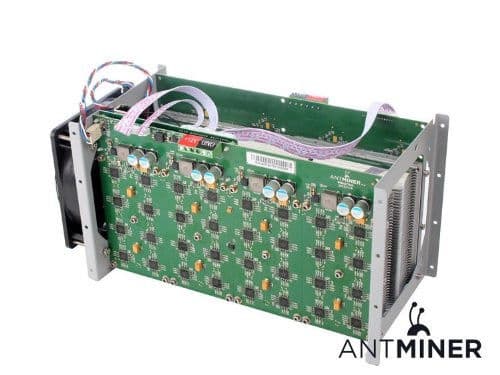
ASIC mining equipment requires the following parts, which are listed below.
- Hashboards. ASIC miners mostly rely on their hashboards to finish their work. The ASIC chips used in these boards are concentrated on solving a particular crypto-mining algorithm, or hash function. 1 To increase the machine’s processing power, an ASIC miner may contain multiple hashboards. Sadly, manufacturers hardly ever sell hashboards. So, it might be necessary to search secondary markets to find these boards.
- Heatsinks. Overheating is a common occurrence in ASIC chips. The majority of machines therefore require air cooling, which is accomplished using a mix of heatsinks and fans. To remove heat from a hashboard, tall strands of aluminum are fitted flush against the surface. These items occupy the majority of the space in a mining rig because of their size. The ASIC chips would probably overheat and burn out without them, though.
- Cooling fans. Heatsinks and cooling fans collaborate. Cooling fans assist in removing heat that is generated, which can lower a device’s efficiency. Two fans are frequently needed for each ASIC machine; one to introduce cool air and the other to remove warm air. Cooling fans frequently operate at maximum capacity in order to effectively cool ASIC miners, which causes them to make excessive noise (75–90 decibels).
- The printed circuit board. A printed circuit board (PCB), which serves as a miner’s brain, receives all processing power from hashboards. The PCB should have an ethernet port, internal memory for mining software, and power buttons in addition to distributing the hashboards’ power. All mining operations are first sent to the PCB for processing before moving on to the hashboards.
- RAM. An ASIC miner will also need a PCB and a small amount of RAM to run an operating system and bitcoin mining software. For storing the Windows operating system and mining software, 4GB to 16GB of RAM should be sufficient.
- Power supply unit. To regulate the power to all mining components, power supply units are also necessary. Calculating how much power is needed by each component is a good way to decide which power supply unit you need because there are many available. The Antminer power supplies, like the APW7 and APW3, are some of the most popular types. Remember that power supplies should only be loaded to 80% of their maximum output when working with electrical equipment.
- Rig frame. A rig frame must be fitted with each of the ASIC miner’s component parts. Even though rig frames can be made from scratch, pre-built frames are more dependable. After all other components have been delivered, a frame may need to be the last item purchased.
An ASIC machine will also need data cables to connect the PCB to the hashboard and an ethernet cable to provide direct internet access, in addition to the parts listed.
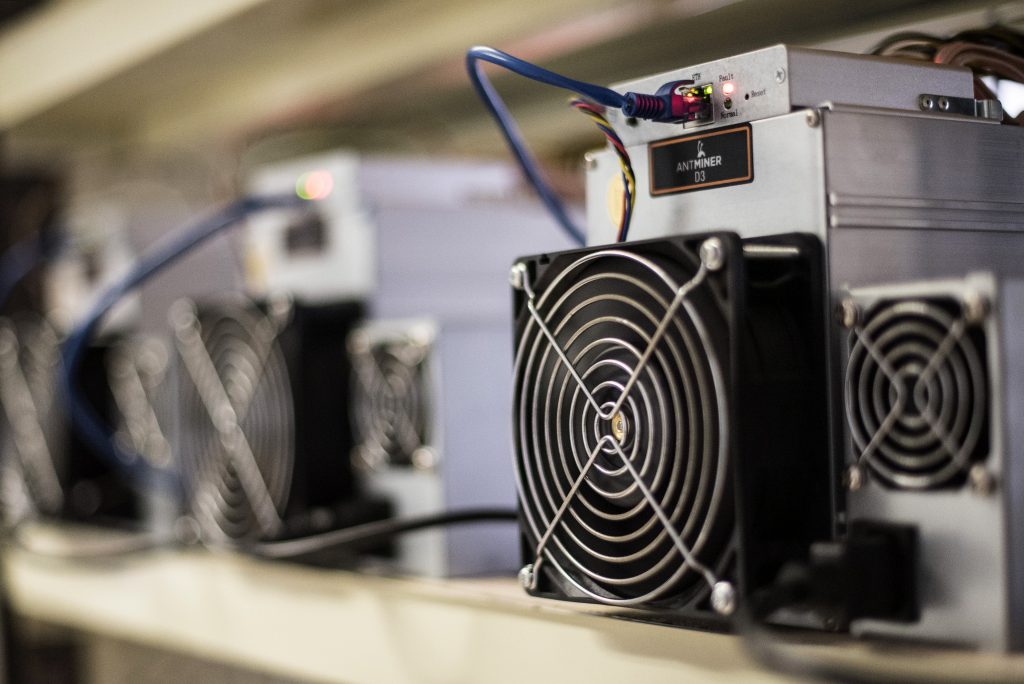
How to Build An ASIC Miner – Full Guide
A cost-effective method of mining cryptocurrencies is to build an ASIC miner from scratch. However, the procedure is not for those who lack courage. It’s crucial to assess the steps involved to determine whether this option is appropriate before investing in the required components.
Step 1. Assess the Viability & Costs of Building An ASIC Miner
A cost analysis is the most crucial step to take when thinking about the possibility of building an ASIC miner. ASIC miner component costs, electricity use, and mining software costs should all be estimated. Profitability can then be calculated using the total cost.
- Mining hardware. An ASIC miner must be constructed from a variety of parts. For the purpose of calculating the miner’s overall cost, a price estimate must be obtained for each. Once determined, the total cost of the components should be contrasted with the price of buying an ASIC miner that has already been built. It might not be worthwhile to invest the time in building an ASIC miner if a new or used one can be purchased for less. Which cryptocurrency the miner will be designed for is another crucial factor. The hashboard’s ASIC chips must be unique to the cryptocurrency that will be mined, even though the majority of the components are still the same. The cost of different ASIC hashboards may vary.
- Electricity. Because ASIC miners use a lot of electricity, this is a very important cost to take into account. It ought to be possible to determine the daily energy consumption in kilowatts based on the mining components.
- Mining software. An ASIC miner must first be connected to the selected blockchain network in order to start validating transactions and earning cryptocurrency block rewards. Software for mining is used to achieve this. The amount of programming required and cost of mining software can vary. Although the majority are, some may offer additional features that may incur a fee; as a result, they should be taken into account when calculating the total cost.
- Determine profitability. Online mining calculators can be used to figure out the profitability of an ASIC miner using the hashrate capacity and power input of the soon-to-be-built mining rig. Users of mining calculators, like NiceHash, can enter a machine’s hashrate output as well as an estimated amount of electricity consumption. These specifics can be used to estimate the likelihood of profitability. It’s critical to keep in mind that a mining calculator can only estimate profitability. Other variables, such as changes in electricity prices, cryptocurrency prices, and mining difficulty, may also have an impact on profitability. The cryptocurrency calculator provided by NiceHash is displayed below.
Step 2. Find and Purchase Components
Building an ASIC miner requires more than 7 different essential parts. Finding, getting, and delivering each of these are required. These consist of printed circuit boards, hasboards, heatsinks, cooling fans, RAM, a power supply unit, and a rig frame.
Unfortunately, finding these ASIC mining components through manufacturers may be difficult. It might be necessary to buy specific components from a secondary market or used, disassembleable ASIC machines. Make sure to only buy from reputable vendors and that all parts have been tested before the ASIC miner is constructed.
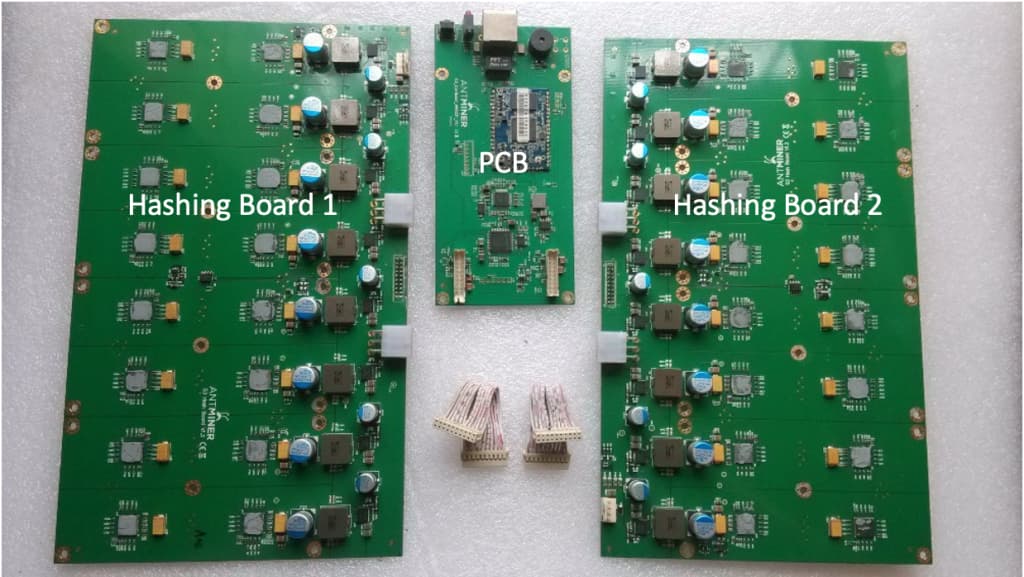
Step 3. Build the ASIC Miner
The ASIC miner can now be assembled after the components have been delivered and tested. The components are all prebuilt, but even so, putting them together will require some technical know-how and understanding of how an ASIC miner operates.
Here are some of the key steps for assembly:
- Make or put together the rig frame. An ASIC miner needs a place to house all of its parts. The rig frame serves this purpose. The rig frame can be bought ready-made or constructed from other materials, but it must be big enough to hold all the required parts. The rig frame should have enough openings for the power supply box and cooling fans in addition to the control board and hashboards.
- Attach cooling fans. To ensure that cool air is passed over the equipment, cooling fans are installed on industrial ASIC mining rigs at either end of the frame. A DIY ASIC miner should use a setup similar to this. Warm air should be drawn out of the appliance by one cooling fan while cool air should be blown into it.
- Position hashboards. Hashboards are vertically arranged and placed parallel to one another in a pre-built ASIC miner. Small grooves carved into the rig frame help to align the placement of each hashboard. The hashboards are stabilized by tiny grooves. A custom-built ASIC miner may house multiple hashboards, depending on the dimensions of the rig frame and the power supply box’s capabilities. Three hashboards, each of which can accommodate more than 50 ASIC chips, are common in industrial ASIC miners.
- Connect after setting the printed circuit board in place. The printed circuit board—the miner’s brain—must be connected to the hashboards after they have been placed. The PCB must, however, be fastened to the rig frame before being connected. Most circuit boards have holes that can be used for screws. Frequently, the rig frame is screwed to the circuit board. ASIC data cables can then be used to link the PCB to each of the hashboards inside the rig frame.
- Power supply connected. The power supply box must be the last piece to be attached to the rig frame. The printed circuit board, the hashboards, and any additional fans should be connected to the power supply. To ensure that the airflow is unaffected, any extra cables should be tied off to the side.
Step 4. Choose and Install Mining Software
Connecting a mining rig to a blockchain network requires mining software. Before starting to mine cryptocurrency, an ASIC miner needs to have a variety of mining software installed on it. They will need to look for and select a reliable mining program based on a few important criteria, including user friendliness, the operating system needed, the price, and any mining pool requirements. Fortunately, the majority of mining software is applicable to numerous different blockchain networks; however, make sure a specific cryptocurrency is supported.
Mining software must be downloaded onto the ASIC mining unit after a choice has been made. To install the software in the proper location, download the required files from the provider of mining software and follow the instructions. The mining software must be installed and then set up to work with the appropriate blockchain network and ASIC mining equipment. This might only require a few clicks on some mining software. Others might need more intricate programming.
Read More: Best Free Bitcoin (BTC) Mining Software
Step 5. Set Up a Wallet and Join a Mining Pool
The final step is to create a cryptocurrency wallet to store cryptocurrency block rewards. To safely collect the rewards from cryptocurrency mining, this must be entered into the mining software.
It may be necessary to join a mining pool in order to compete for some cryptocurrencies, like Bitcoin. As a result of the pooling of mining resources, smaller mining farms can compete with each other. Read our comprehensive comparison article for more information on the top Bitcoin mining pools.
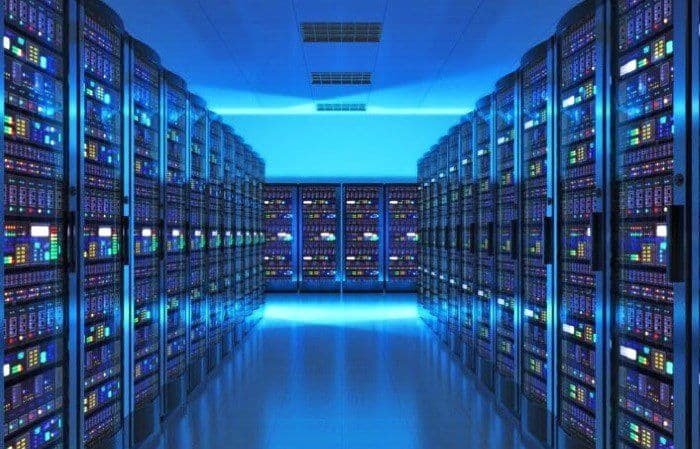
Step 6. Start Mining With ASIC
The DIY ASIC miner is prepared to begin collecting cryptocurrency block rewards after a blockchain connection has been made and a crypto wallet has been created. Remember that this is a very complicated process, so it is crucial to verify all connections before proceeding. Cryptocurrencies will be automatically deposited into a selected crypto wallet once mining has started.
Step 7. Monitor the Condition of Your ASIC Miners
Do you desire a longer lifespan for your technology? In that case, we advise connecting them, installing the firmware, and mining the chosen coin. Additionally, be sure to keep an eye on the health of your ASIC miners, monitor the temperature, dust off the equipment, and ensure heat dissipation.
With contemporary, potent hardware, mining can provide a good income. The most important thing is to approach the problem sensibly. Before making a purchase, carefully review the ASIC’s specifications and determine its payback. Remember the advantages of custom firmware, pick an affordable, reputable pool, and keep an eye on your hardware. You will make money from mining cryptocurrencies if you heed all of these suggestions.
Best ASIC Mining Machines to Buy
Here is the list of the best ASIC miners for mining cryptocurrency:
- Antminer S19 Pro – Best for most profitable ASIC mining of Bitcoin
- WhatsMiner M30S++ – Best for highly efficient Bitcoin mining.
- AvalonMiner 1166 Pro – Best for high hash rate mining.
- Innosilicon A10 Pro – Best ASIC Miner for Ethereum mining
- AvalonMiner 1246 – Best for reliable and managed ASIC mining.
- Dragonmint T1 – Best for low-temperature ASIC mining.
- Whatsminer M32 – Best for non-profitable mining of SHA-256 algorithm currency.
- ASCIminer 8 Nano – Best for residential mining.
Although mining is inherently risky, with many more ways to lose money than opportunities to make it, there is money to be made with the right amount of planning and research. And if mining cryptocurrencies were simple, it wouldn’t be nearly as exciting—much like the gold rush that drove people to flee to the hills in California.
Conclusion: Buying Than Building
If you know what to do, cryptocurrency mining can still be very profitable. By using pre-built components to construct a DIY ASIC miner, it may be possible to increase profitability. Although not for the faint-hearted, a profitable ASIC miner can be built that generates passive crypto reward.
Follow the steps to build an ASIC miner with DIY pre-built components to mine Bitcoin or other cryptocurrencies:
- Evaluate the costs and viability of constructing an ASIC miner. Calculate the profitability while taking into account all associated costs, such as those for mining hardware, electricity, and software.
- Find and buy the necessary components. Purchase the basic parts, including the rig frame, RAM, printed circuit boards, PSU, hashboards, heatsinks, cooling fans, and RAM.
- Build the ASIC miner. Attach the fans, assemble the rig frame, place the PCB and hasboards, and connect the PSU.
- Software for mining should be chosen and installed. Install the mining program you’ve chosen for the particular cryptocurrency.
- Organize a wallet and sign up for a mining pool. Create a cryptocurrency wallet, then look for a secure mining pool to join.
- Start mining crypto. Connect to the blockchain network, turn on the ASIC mining rig, and begin mining cryptocurrency.
- Monitor the condition of your ASIC miners. Monitor the condition of your ASIC miners, track the temperature, clean the devices from dust, and ensure heat dissipation.
The process is ultimately very difficult, and you might not even be successful. Because of this, it is preferable to purchase an ASIC machine and set it up on your own or to use GPU mining rigs.
ASIC Miner FAQs
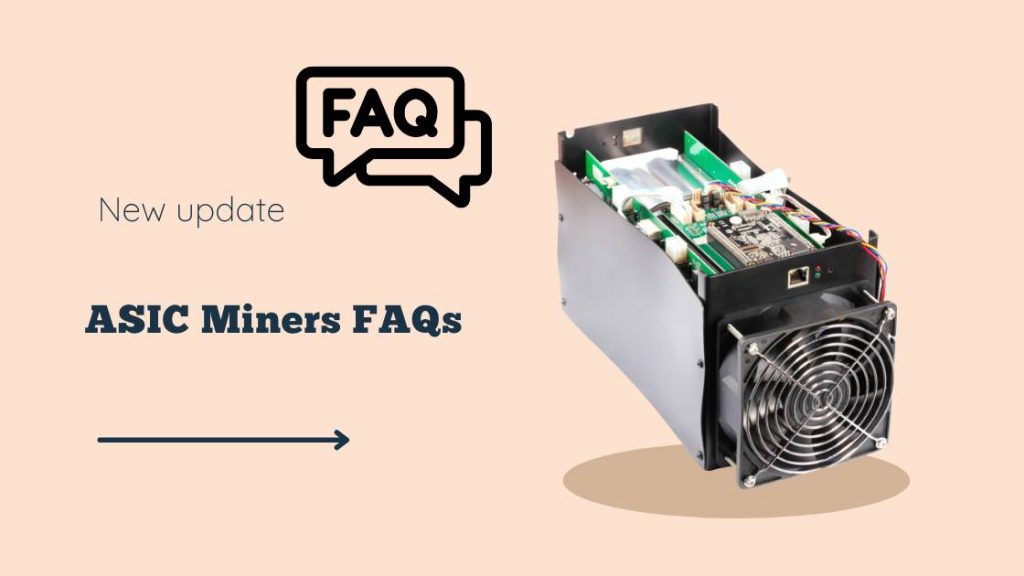
Can You Build ASIC Miners?
Though very challenging, building an ASIC miner from scratch is not impossible. There are many difficulties, such as finding the parts and properly putting them together. Furthermore, in order to set up the mining software and connect to the blockchain, the miner needs to have a basic understanding of programming.
How Much Does An ASIC Miner Make?
There are many different variables that affect how much money an ASIC miner makes. The hashrate output of the equipment, the electrical consumption of the equipment, and the cost of the cryptocurrency are important factors in calculating a miner’s earnings.
Is GPU Mining Profitable?
GPU mining is still a potentially lucrative business. Despite being less effective than ASIC mining chips, GPUs are more affordable. GPUs are therefore less dangerous for those who are testing out crypto mining for the first time. If cryptocurrency mining becomes a lucrative endeavor, DIY GPU mining rigs are also simpler to upgrade over time.
Is Mining With ASIC Better?
They do outperform CPUs and GPUs at mining cryptocurrencies. They have greater processing power, which enables them to process much more data in a given amount of time.
Additionally, they use less energy and are rated according to their hash rate (hertz per second), which can be Gh/s, Th/s, or Mh/s. Terra hash ratings are at the moment assigned to the highest rated items.
How Loud Are ASIC Miners?
ASIC mining equipment frequently makes a lot more noise than GPU mining equipment. When making your purchase, keep this in mind! ASIC miners vary in how much noise they make, with some making virtually no noise.
How Long Do ASIC Miners Last?
ASIC miners typically last between two and five years. After that, ASIC miners are typically more modern and effective, which significantly reduces the profitability of mining on older hardware.
It would be best to take into account more than just a machine’s hashing power. Some ASIC models may be taken offline based on how profitable they are; profitability itself varies with Bitcoin’s cost and difficulty. Older ASIC models are frequently reintroduced to the market as price levels rise. The result will be the opposite if low price levels fall or the difficulty of mining significantly increases.
Are ASIC Miners Worth It 2022?
Profitability is significantly influenced by the cost of Bitcoin mining hardware. According to reports, the costs of top and mid-tier application-specific integrated circuit (ASIC) miners, the specialized chips made for Bitcoin mining, have fallen by about 70% from their all-time highs in 2022, when units fetched between $10,000 and $18,000 each.
How Much Does an ASIC Miner Make a Day?
In February 2022, one Bitcoin mining machine (commonly known as an ASIC), like the Whatsminer M20S, generates around $12 in Depending on the price of bitcoin, bitcoin income varies every day.
How Long Do ASIC Miners Stay Profitable?
As the costs of application-specific integrated circuit (ASIC) miners hover around $8,000 to $12,000, and electricity costs take up more than half of the projected income — the current estimated time frame when a miner could cover the cost of one device is five to six years.Jul 28, 2022.
Can I Mine Bitcoin With One ASIC?
There are more than ~1 million ASIC miners (specialized devices built for mining BTC and other cryptos) securing the Bitcoin network, and only one ASIC at a time can win the block reward. Therefore, the chances of one machine winning are one in a million.
